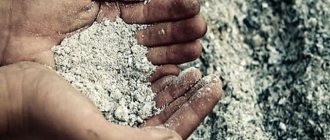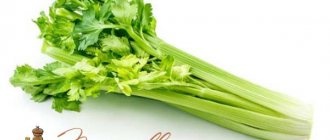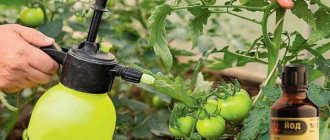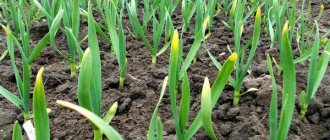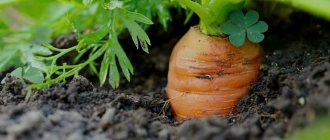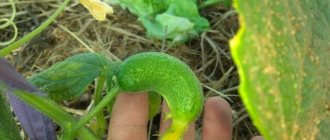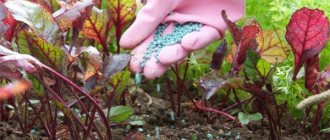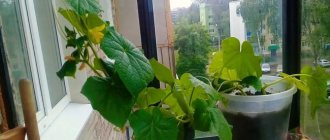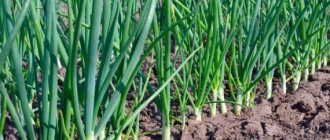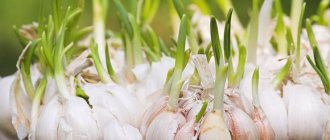Author's rating
Author of the article
Yakov Pavlovich
Professor, Head of the Department of Vegetable Growing
Articles written
153
The need of plants for microelements is small in quantitative terms, but without them metabolic processes in cells are disrupted. The yield of cucumbers directly depends on the provision of adequate nutrition, and the demands of the crop change throughout the season. Soil rich in rotten organic matter and complex mineral fertilizers contain the necessary substances, but not always in optimal amounts.
In addition to large supplies of macronutrients (nitrogen, potassium, phosphorus), cucumber plants need:
- in moderate amounts of the so-called mesoelements (calcium, magnesium and sulfur);
- in mini doses of microelements (boron, manganese, iron, copper, zinc, molybdenum, cobalt, silicon, iodine).
The last two groups are often combined under the general term “microelements”. Their deficiency reduces the productivity of cucumbers.
THE APPEARANCE OF CUCUMBER PLANTS SIGNALS TO THE VEGETABLE GROVER ABOUT A SHORTAGE OF SPECIFIC MICROELEMENTS. THE SITUATION CAN BE CORRECTED BY APPLYING SPECIAL FERTILIZERS.
Expert opinion
Stanislav Pavlovich
Gardener with 17 years of experience and our expert
Ask a Question
INTERESTING! Foliar feeding (spraying) acts on plants very quickly, but only for a short time. Watering with a nutrient solution ensures a longer adjustment. The addition of a stimulant (Epin Extra, Zircon) enhances the positive effect of microfertilizers on plants.
Calcium
This chemical element is responsible for the health of root hairs and cell division at the growth point on the stem, and slows down the aging of foliage.
Calcium starvation is observed in acidic soils, and also sometimes occurs during the seedling period (especially in small pots).
IMPORTANT! If there is not enough calcium in the soil, then cucumber plants do not absorb all nutrients well.
Symptoms of deficiency:
- There is a general delay in growth and development, and numerous signs of deficiency of various nutrients appear.
- The plants look frail and weak.
- If you slightly expose the root system, you will notice its partial death, as well as darkening of the root hairs.
- The ovaries fall off.
Solution to the problem:
- It is useful to feed grown cucumber seedlings 1 – 2 times (water and sprinkle) with a solution of Calcium nitrate (in the proportion of 2 g per 1 liter of water).
- When giving plants root and foliar nitrogen fertilizers during the season, you need to periodically use Calcium Nitrate instead of manure and Urea.
- For prevention, preliminary liming of acidic soils is practiced.
Excess calcium leads to necrosis and leaf loss.
What might cucumbers be missing?
Cucumbers are less susceptible to various diseases and lesions than, for example, tomatoes. But there are a number of strict requirements for caring for this vegetable. Poor growth or the appearance of some features in appearance may be associated with the following factors:
- improper watering;
- uncomfortable temperature conditions and lack of oxygen;
- deficiency of nutrients in the soil
Magnesium
In cucumbers, the need for magnesium increases during the fruiting phase. A lack of microelement leads to the destruction of chlorophyll and rapid aging of plants.
Many soils contain insufficient amounts of available magnesium compounds, especially acidic, sandy loam and light soddy-podzolic soils.
Symptoms of deficiency:
- Interveinal chlorosis occurs: the leaf blades turn pale and yellow, but the veins remain bright green. The process first affects the lower leaves, and in advanced cases spreads to the upper ones.
- Petioles and shoots of plants become fragile and break easily.
- Cucumbers grow atypically small.
IMPORTANT! Fertilizing with organic matter (manure, droppings, herbal infusion) is not able to quickly relieve acute symptoms of magnesium deficiency.
Solution to the problem:
- Cucumber plants should be sprinkled and watered at the root with one of the following preparations: Magnesium sulfate, Kalimag, Mag-Bor (10 g per 5 liters of water). Feeding is repeated after one and a half to two weeks.
- In a greenhouse, you can use an aerosol microfertilizer - a “Greenhouse” tablet.
- Prevention required:
- on acidic soils, spread Dolomite flour in the fall (this deoxidizer is rich in magnesium);
- Regular application of manure humus gradually enriches the soil with magnesium compounds.
Excessive doses of magnesium lead to darkening, wrinkling and reduction in the size of leaf plates.
Signs of micronutrient deficiency in cucumbers
When cucumbers do not have enough mineral fertilizers in the soil, the plants begin to react to their deficiency. You can determine the lack of microelements in cucumbers in a photo of one or another element by looking at the foliage and vines. The photo shows that the foliage turns yellow, dries out and crumbles, brown spots appear, the stems look drooping - this is a clear lack of nutrition.
Sulfur
Sulfur starvation is similar to nitrogen starvation: the growth of plant cells slows down and many metabolic processes are disrupted.
Sulfur is part of organic matter - humus acids, and therefore is present in sufficient quantities in humus-rich soils. Little mineral and organic sulfates are found in sandy loams, as well as in poor soddy-podzolic soils with increased moisture.
Symptoms of deficiency:
- Leaves (especially young ones) turn pale along with the veins, but do not fall off (unlike nitrogen deficiency).
- The leaf blades are bent downwards.
- Pronounced notches appear along the edges of young leaves.
- The ovaries grow too slowly.
See also: How can you feed cucumbers during flowering and fruiting?
Solution to the problem:
- Cucumber plants are given foliar feeding with Magnesium Sulfate (6 g per 3 liters of water), repeat after 10 days.
- For prevention, before planting cucumbers, the soil is filled with a fertilizer such as simple superphosphate (0.5 kg per 10 sq. m). It contains a sufficient amount of sulfates.
If there is too much sulfur, plant tissues become rough, stems harden, and leaves become smaller.
Phosphorus deficiency
The lack of phosphorus can be judged by the color of the leaf blades. At first a slightly bluish tint appears. With a significant lack of phosphorus, the leaf blades turn reddish. But the color change occurs only in old leaves. Young leaf blades, which are small in size, can also be used to judge the lack of a microelement.
If we are talking about a period of active growth of a vegetable crop, then the lack of phosphorus also negatively affects the formation and growth of shoots. Much fewer ovaries are formed than they should be. As for the fruiting period, with a phosphorus deficiency, cucumbers ripen very slowly.
Bor
This element is present in all plant organs; it is indispensable for the functioning of cell membranes. The role of boron in the formation of feeding roots, growth points, flowers, ovaries, and fruits is great.
Expert opinion
Stanislav Pavlovich
Gardener with 17 years of experience and our expert
Ask a Question
INTERESTING! Areas regularly fertilized with organic matter contain a sufficient amount of boron compounds.
Boron is poorly absorbed by plants from soils with a high pH (alkaline type), including after heavy liming. In damp and sandy areas, there is a deficiency of the element due to its rapid leaching.
Symptoms of deficiency:
- Few flowers are formed, the fruits become ugly, and the ovaries fall off en masse.
- Side shoots and growing points die off.
- The leaves bend slightly, and a thin yellow border appears on them.
- The stems become brittle and the internodes shorten.
- If you expose part of the root system, you will be surprised by its orange tint and thickening at the ends of the roots.
Solution to the problem:
- In case of acute boron starvation, foliar and simultaneous root feeding with Boric acid (5 to 10 g per 10 l of water) or Mag-Boron (20 g per 10 l of water) is recommended.
- A slight deficiency is compensated by watering with slurry or herbal infusion (when diluted with water in a ratio of 1:5).
- In closed ground, aerosol fertilizing is useful: burning microfertilizer in the form of a “Greenhouse” tablet.
With an excess of boron, the lower leaves bend dome-shaped, turn brown at the edges and turn pale between the veins, become lemon yellow, and then die.
How to determine the lack of micro and macro elements in plants?
When growing popular crops such as tomatoes, cucumbers, peppers in dachas, vegetable gardens and personal plots, gardeners sooner or later encounter various disturbances in the growth of the plant and its appearance. How to visually determine what is wrong with a tomato or cucumber?
Look at the leaves! The first thing you need to determine is whether the problem appears on old leaves or on new, young ones.
If you find a problem on old, lower foliage, then most likely these are signs of a lack of phosphorus, nitrogen, potassium, less often magnesium and even less often zinc and molybdenum. The deficiency will be noticeable first on the lower leaves, so if its obvious signs are found on the plant, you should not wait for these signs to appear on younger shoots, although sometimes this is inevitable. The review will reflect problems related specifically to the LOWER FOLIAGE; read about the problems of the upper foliage of the plant in the second part of the review!
Manganese
This microelement is concentrated in young organs and participates in metabolic processes, accelerating plant development. Manganese deficiency leads to disruption of carbohydrate synthesis, which negatively affects the condition of the root system.
Peat and sandy loam soils contain little manganese. Organic fertilizers (manure, droppings) enrich the soil with useful manganese compounds.
Symptoms of deficiency:
- Areas of dead tissue appear on the leaves in the form of small dots.
- The foliage gradually becomes “marbled” - pale yellow with dull green veins.
- When young leaves grow, they have a light green or greenish-brown color, then a narrow yellow border appears on them.
Solution to the problem:
- We recommend foliar feeding with special microfertilizers - manganese chelate or manganese sulfate (manganese sulfate), according to the instructions for specific preparations.
- Potassium permanganate (Potassium permanganate, Potassium permanganate) is used as a folk remedy; Cucumber plants are sprayed with a solution in a proportion of 1 g per 5 liters of water.
IMPORTANT! The best option for replenishing the microelement deficiency is manganese chelate.
An overdose leads to the appearance of purple spots on the leaves and fruits, rapid aging and death of cucumber plants. Vegetable growers who are fond of disinfecting soil watering with potassium permanganate should remember this.
Brown spots on leaves
The appearance of a large number of brown spots on cucumber leaves and their active death as a result is a sign of phosphorus deficiency. To make up for this deficiency, you need to fertilize the plants with fishmeal or superphosphate. As an option, you can feed with Ammophos, diluting it at the rate of 1 tsp. funds per liter of water.
Suitable for people with weak immune systems: the “advantages” of the Vector vaccine have become known
In winter I make homemade roasted carrot salad with citrus dressing.
I spin it more and put it on for the holidays too. Recipe for juicy pickled carrots
A huge amount of phosphorus is contained in wood ash, which should be sprinkled on holes when a deficiency of this microelement is observed.
Iron
Iron compounds are involved in various metabolic processes of plant tissues (photosynthesis, protein production, etc.).
Many types of soils, especially carbonate ones, contain forms of this microelement that are inaccessible to plants. Organic fertilizers are not suppliers of iron; it is advisable to apply it in the form of chelated microfertilizers.
Symptoms of deficiency:
- The growing leaves turn pale and then turn yellow. The veins initially remain green, but subsequently also lose color. There may be a fall of yellowed young foliage while retaining the old greenery.
- The ovaries become weak and few in number.
Solution to the problem:
- A quick effect is achieved by combining foliar and root fertilizing with iron chelate (according to the instructions for the preparation).
- Iron sulfate as a fertilizer is poorly absorbed by vegetable crops. It is better to prepare a chelate form from it by mixing 5 liters of water, 5 g of citric acid and 8 g of Iron sulfate (use immediately).
Expert opinion
Stanislav Pavlovich
Gardener with 17 years of experience and our expert
Ask a Question
INTERESTING! Symptoms of iron excess almost coincide with the signs of iron deficiency.
Potassium deficiency
Potassium deficiency makes cucumbers bitter
Potassium deficiency can be determined by the excessively green color of the leaves. At the same time, there is a thin yellow strip along the edge of the plant. Over time, the edges of the leaves dry out. During the period of active growth, excessively long shoots are formed. Despite the active growth of shoots, there are practically no ovaries on the vegetable crop.
As for the fruiting period, with potassium deficiency, cucumbers become overly filled with water and become bitter. In addition, their shape changes slightly. At the base the fruits become longer. If there is an excessive lack of potassium, the plant begins to wilt. The first to wither are young shoots that have not had time to gain nutrients.
Copper
Copper is involved in photosynthesis and the supply of water to cells, stimulates immunity and resistance to diseases.
See also: What to do if cucumber seedlings are frozen
A deficiency of this element is often recorded on peat and sandy lands with high acidity. Copper is present in organic fertilizers (manure, droppings).
Symptoms of deficiency:
- The upper leaves grow small or too large, take on a whitish color with dark green veins, and become lethargic.
- The shoots look flattened.
- There are fewer flowers and ovaries.
- The fruits do not grow to standard sizes; the quality of the pulp deteriorates.
- Fungal diseases become active.
Solution to the problem:
- Plants need to be sprayed with a special modern preparation - copper chelate microfertilizer (1.5 g per 3 liters of water), and re-treated after a week.
- For foliar feeding, it is permissible to use copper sulfate (3 g per 3 liters of water), but the chelate form is considered more effective.
IMPORTANT! Excess copper causes yellowing and brown spots on the lower leaves. Excessive watering of beds with concentrated copper sulfate (to kill infections) can lead to the accumulation of the element in the soil and toxic poisoning of plants.
Zinc
Zinc compounds activate metabolic processes and the production of natural stimulants, and participate in the construction of plant DNA.
Heavy soils contain more zinc than sandy soils. Adding organic matter enriches the soil with this valuable microelement.
Symptoms of deficiency:
- The foliage takes on a yellowish-bronze color.
- There is a strong inhibition of growth, internodes are shortened, leaves become smaller.
Solution to the problem:
- The most effective are spraying and watering with zinc chelate at intervals of one and a half to two weeks.
- Foliar feeding with zinc sulfate is useful.
In case of an overdose, the leaves of the plants turn yellow and the veins become inky purple.
Molybdenum
The microelement promotes the absorption of nitrogen and oxygen and is part of enzymes.
Loams are richer in molybdenum than sandy loams. Molybdenum compounds are found in organic fertilizers.
Symptoms of deficiency:
- The leaf blades turn yellow at the edges.
- The tissue between the veins and along the edges die, the foliage becomes holey.
- Flowers and ovaries are deformed.
Solution to the problem:
- spraying with microfertilizer Ammonium molybdate (Ammonium molybdate).
Excess molybdenum is dangerous not so much for plants as for people consuming vegetable products, so it is necessary to strictly observe the norms for applying molybdenum fertilizers.
Nitrogen deficiency
The fact that cucumbers lack nitrogen can be judged by several signs. First of all, take a closer look at the formation of shoots. Since the plant does not have the strength to form green mass, shoots are formed weakly. Even the emerging shoots develop very slowly.
Small leaves also indicate a lack of nitrogen. Their sizes do not correspond to the standards of the variety; moreover, they acquire a light green color. With a serious lack of this microelement, the leaf blades turn yellow. If no action is taken, the leaves will eventually fall off the weak vine.
Poor ovary formation also indicates nitrogen deficiency. During the fruiting period, lack of nitrogen negatively affects the size of the fruit.
Cobalt
Cobalt compounds are involved in the process of photosynthesis and affect leaf growth.
Swampy and light soddy-podzolic lands, sandy loams and gray soils are poor in cobalt. The soil is enriched with this microelement when manure is applied.
Symptoms of deficiency:
- coincide with nitrogen starvation: yellowing of foliage, inhibition of stem growth and ovary formation.
Cobalt deficiency is compensated by fertilizing with complex microfertilizers containing this element (Humate +7 iodine, Tsitovit, Sudarushka, Siliplant). Cobalt compounds are present in manure, peat compost, and wood ash.
Silicon
The important role of this microelement for plants was discovered quite recently. External signs of silicon deficiency were not detected, but its application in microdoses has a positive effect on vegetable crops.
Expert opinion
Stanislav Pavlovich
Gardener with 17 years of experience and our expert
Ask a Question
INTERESTING! Bioactive silicon compounds increase the resistance of cucumber plants to bad weather and diseases, inhibit the development of powdery mildew, and promote yield growth by 10–16%.
Silicon is contained in Siliplant and Microvit-6 fertilizers.
Watering conditions and temperature
Cucumbers need to be watered frequently, but in moderation. You should not flood the crop until a swamp forms, otherwise the roots of the plant may begin to rot. Lack of oxygen can lead to the same consequences. It should be remembered that in a greenhouse it is necessary to open the window every day, or remove the film if the vegetable grows in open ground under the film.
Cucumbers are moisture-loving; moderate air humidity should be maintained in the greenhouse. Watering is best done in the evening, after 17-19 hours. Water for irrigation should never be cold, not lower than 16 degrees. If you are watering incorrectly, you can tell by the following external signs:
- the leaves turn yellow, which means the crop is suffering from water deficiency;
- The fruits taper in the middle, which means the water is too cold.

